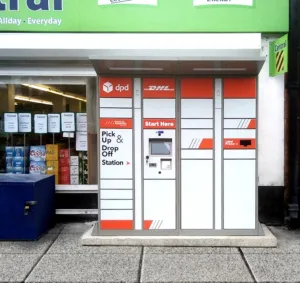By Greg Blazewicz, CEO at SALESmanago
It’s safe to say it’s been quite the ride for the Ecommerce market in the last two years. A reshaped post-pandemic landscape has now been met with inflation, disrupted supply chains and constantly evolving consumer behaviour – all amidst a growing cost of living crisis. Guided by this unpredictable turmoil, the ride’s now spiralling its way through to a recession.
This comes at a time when Ecommerce is facing numerous challenges. According to Mckinsey, globally, eCommerce revenues have dropped by 3% in Q1 2022 – and by 13% in Europe. This has been joined by a consumer loyalty crisis, with more US consumers switching brands in 2022 than at any time since the pandemic began and 90% planning to continue this trend.
For CEOs who’s purse strings are only set to tighten, marketing can often be seen as the first to get slashed; a ‘recession reflex’. But, in reality, it should be the last department to go – it just needs the right tools and strategy.
Lean marketing could be your holy grail. When attempting to navigate an Ecommerce sea of uncertainty, lean marketing not only provides the foundations to gain a foothold in such conditions, but uncover the insight to sail ahead of the rest.
The challenges in the world of digitisation
The unpredictability of consumer markets is simultaneously being joined by a predictable and unstoppable process of digitisation. This necessitates further adaptation, innovation and creativity by Ecommerce businesses.
What’s emerged is an array of key digital challenges. There’s a constant widening of data and privacy awareness that brands have to stay on top of. The customer experience has to be continuously bettered, which in turn should meet the need to boost customer loyalty. Finally, in order to fulfil these shifting demands, omnichannel buying processes are a ‘must-have’.
But the practicalities of overcoming these problems and achieving a streamlined approach can be harder than anticipated. There are many complexities that come with creating the omnichannel experience, especially when trying to form synergy between a variety of partners, platforms and software and extract data from each channel. This is not to mention hyper-aggressive competition strategies, skyrocketing customer acquisition costs and the rising desire for personalised and relevant relationships.
All these challenges make it harder than ever to achieve acceptable conversion rates and marketing ROI. But it also showcases exactly why the right marketing strategy can be so integral to brands, customer engagement and business growth.
Marketing’s value – but it needs to be lean
The reason why marketing can often become the scapegoat for senior management – especially in tough economic times – is that marketing strategies can often be costly, inefficient and untargeted. This only exacerbates its value and the ability to prove its ROI.
But adopting a fully optimised, holistic and leaner process can turn it into the top goalscorer for the company. The way to overcome a consumer loyalty crisis is to implement a personalised and targeted marketing strategy that directly caters to your customers’ needs, wants and desires.
With a lean marketing approach, brands can gather an insight into what the consumer really cares about, cleaning the entire communication process and eradicating any time or money inefficiencies. Cost savvy, insightful data and trends can be used to create personalised campaigns. In a nutshell, it’s streamlining the whole process, removing any activities that don’t bring direct value to that target customer.
It’s all well and good outlining the approach, but how exactly do you implement such a strategy?
A lean marketing strategy to unleash business growth
Technology is vital, and, in particular, utilising Customer Engagement Platforms and AI to optimise processes. By adopting this in your lean marketing Ecommerce strategy, you can gain an advantage adhering to three key principles:
1. Grow customer intimacy and trust
This is all about knowing your customers better than your competition. A self-learning solution can gather and manage zero and first party data to capture all customer data across relevant sources. This helps you stand out from the crowd, build a deeper trust and hit top-tier retention stats.
2. Communicate with human relevance
As any marketer knows, it’s all about people. AI can predict aspects such as Customer Life Value and churn. Recommendations from the engine can facilitate campaign execution across all channels, creating personal customer journeys and strengthening relationships. It’s using data to create a hyper-personalised omnichannel experience.
3. Continual growth intelligence
This is where the human side is merged with AI-based guidance to maximise the impact of time, budget and strategy. By knowing what works, what doesn’t and having access to next step guidance, brands can gain full control over revenue outcomes, optimise costs and exceed targets.
Go lean to buck the trend
Uncertain times call for certain measures. A constantly evolving consumer and digital world has to have agile, flexible and adaptable processes to understand changing customer behaviour in realtime. It’s a targeted over scattergun approach to deliver that all important personal touch.
By eliminating any wasteful, inefficient and costly marketing endeavours, you’re placing yourself in a sturdy position to steady the ship in choppy waters. Rather than falling victim to ‘recession reflex’ cuts, going lean can usher in a new wave of insights, data and processes to propel business growth and cement customer relationships. It’s telling that over two thirds of CMOs using Lean Marketing methods report increased profits and revenues.
Put simply, lean marketing is a must for all organisations looking to create an impact and prove revenue contribution, especially in these uncertain times. It is also crucial if marketers want to be recognised as trusted revenue partners for their CEOs.










